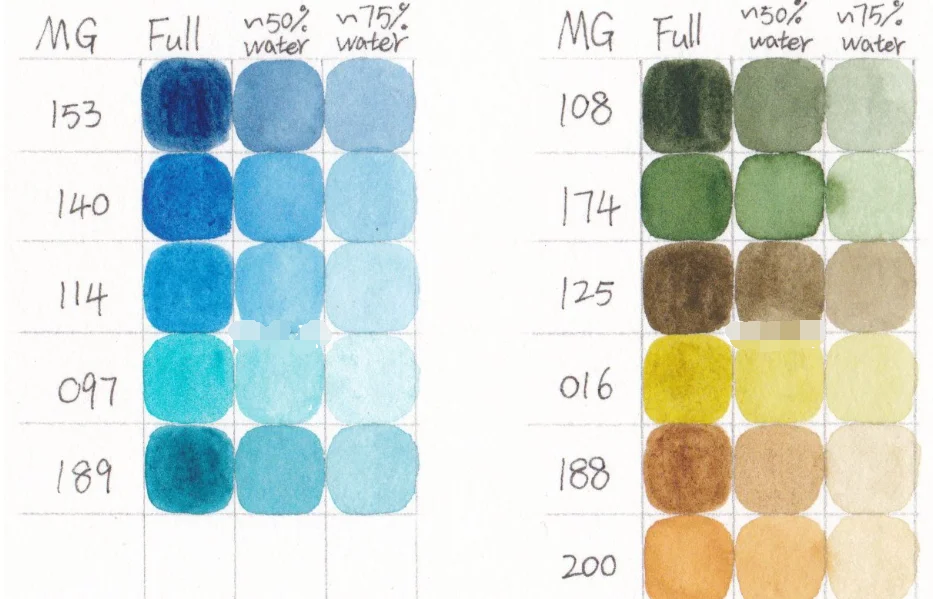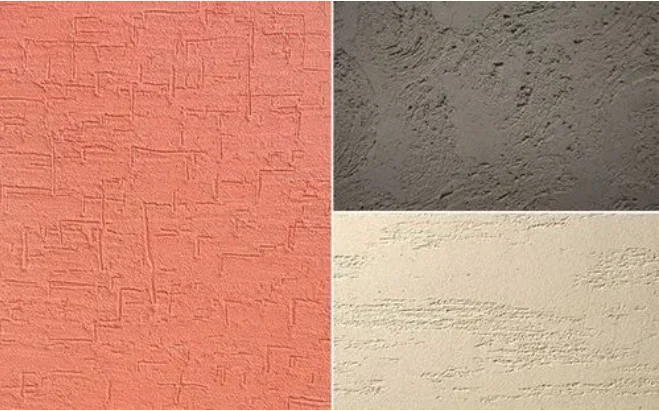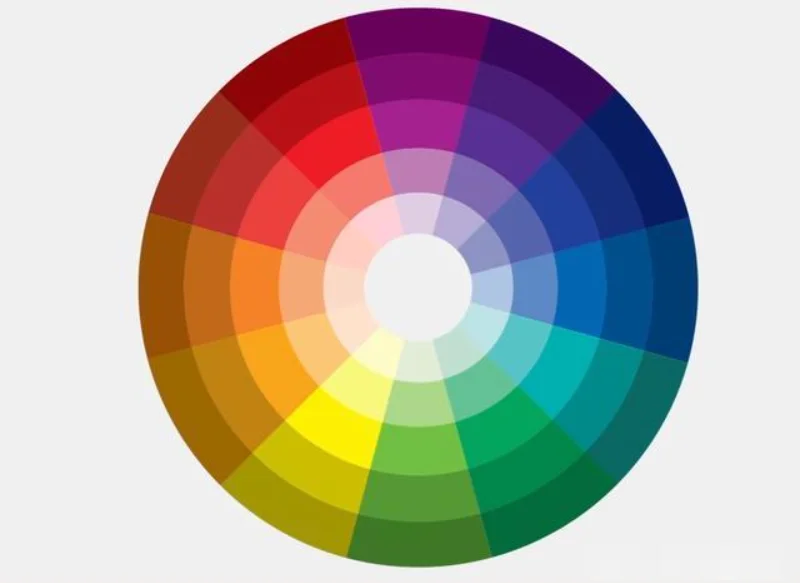Pigments are widely used in daily life, and coloring in various industries cannot be done without pigments. The performance of pigments directly affects the coloring effect. So what are the performance indicators of pigments, and how should we test them to ensure the quality of pigments?
Main performance indicators of pigments include the coloring power, tone, tinting strength, covering power or transparency, water resistance, soap fastness, alkali/acid resistance, color fastness, migration, light fastness, weather resistance, thermal stability, fluidity, etc.
How to detect pigment Coloring performance?

1. Tone
For a long time, a basic method of color evaluation is visual evaluation by trained professional coloring personnel. With the development of color evaluation technology, a more scientific evaluation system will be formed slowly. In practical applications, people tend to use standard pigments for a desired color. The test sample and standard sample are colored to some extent according to the specific dispersion system. Then, color differences of the test sample and standard sample are compared. Common color systems include the CIE*Lab system and XYZ tristimulus value system, which can be converted to each other.
2. Coloring power
Coloring power is divided into the absolute coloring power and relative coloring power. The absolute coloring power refers to the absorbance of pigments, i.e. the maximum absorption wavelength or the overall absorbance coefficient within the whole visible spectrum. The relative coloring power is a relative value obtained by comparing the absorbance coefficients of test samples and standard samples. At the same color depth, there is a proportion between the sample pigment and standard pigment. However, it is impossible to determine an accurate proportion each time, because there are inherent color differences, which cannot be resolved in terms of quantity only. Color differences are expressed by the CIE*Lab system. Pigments vary in the coloring power based on application conditions, including color development methods, determination methods and evaluation methods.
3. Covering power or transparency
The covering power represents the ability of a pigment layer to hide substrate differences. It is defined as the area covered by a certain amount of pigment, or the minimum thickness required to cover a substrate layer. In order to effectively cover a substrate, the coating must be scattered. The scattering coefficient is related to the coating thickness, light adsorption and substrate color.
How to detect Solvent resistance and fastness in Pigment Applications?
By definition, pigments should be insoluble in the medium used, but they are not absolutely insoluble. Depending on the medium or processing technology, pigments may be dissolved more or less. If the solvent in the carrier reaches a certain amount, it is critical to prevent pigments from dissolution by recrystallization, bleeding and spouting. Factors affecting the solubility of a pigment in a medium include the solvent used, chemical structure and particle size of the pigment, and the processing temperature.
A method for testing of the resistance of a pigment to some solvents: roll a piece of filter paper with pigment powder, put it into a test tube, and add the solvent. The pigment and solvent should be weighed. Keep the pigment at room temperature for 24h. The degree of solvent dyeing indicates the solvent resistance of the pigment. This method does not completely represent practical applications. However, it is instructive to determine the trend. If the pigment is obviously dissolved in a solvent, it will have the problems of color change, rheology and fastness in media containing this solvent.

1. Resistance to water, soap, alkali and acid
It has two meanings: (1) chemical stability in these media; (2) solubility in these media. During production and application, pigments for ink printing should be resistant to water or alkali, those for exterior wall coatings should be resistant to cement or lime, and those for automotive coatings should be resistant to alkali and detergent. There are standard test methods for this indicator. This indicator is evaluated at Levels 1-5. Level 5 is the highest level. Based on applications, the appropriate test method should be determined for direct exposure of pigments to acid, alkali and other substances.
2. Printing of packaging materials
Depending on packaging materials and packaged items, special tests should be carried out to meet fastness requirements, including the resistance to cheese, oil, wax, drug, disinfectant, cooking, heat sealing, coating film and printing.
3. Fastness of textile
It mainly refers to the ability of dyed fibers or textiles to retain colors in processing or application. For example, pigments should be resistant to sewing, water, peroxide, acid bleaching, sweat, friction, ironing, dry cleaning, acid/alkali solvent, sodium hydrosulfite, hot pressing, etc.
How to detect pigment’s Light fastness and weather fastness?
1. Light fastness:
Refer to the inherent ability of pigments to retain original colors in sunlight. Pigments should be combined with the dispersion system during testing, instead of exposure to sunlight. Most pigments change colors in the presence of light. Photosensitive factors of the coloring system include the chemical structures and physical parameters of pigments, as well as properties of other components. The light fastness is tested with a standard meter, using a xenon lamp as the light source. However, substrates, volume concentration, layer thickness and additives will affect test results.
2. Weather fastness:
Light is not the only factor leading to pigment changes. Other factors, such as water, gas, industrial emission and climate change, are more destructive than light. The coating system should be resistant to chemical and physical factors in climate. The weather fastness should be tested under specific conditions, such as the light intensity, temperature, humidity, oxygen content and air composition. These conditions change each day and season. The latitude, longitude, height and proximity to industrial zones also affect the weather fastness.
The Mobility of Pigments
This refers to the occurrence of color bleeding and frosting. Color frosting refers to the migration of dissolved pigments from the application medium to the surface, which will reappear after being wiped off. Color bleeding refers to the color transferred by similar materials upon contact. The degree of migration is related to the chemical structure, particle distribution, and content of the pigment. Secondly, migration is also related to the entire composition of the colored material, such as plasticizers, polymers, stabilizers, etc.

Thermal stability of Pigments
It’s mainly relevant during the coloring process in the plastic industry and fiber pulp processing industry. The temperature during processing is generally around 260-320 degrees Celsius. Only a few pigments can withstand this temperature, and the temperature resistance of most pigments is only around 100 to 200 degrees Celsius. In a coloring system, the reasons for heat discoloration are: thermal decomposition of pigments, chemical reactions between pigments and media, dissolution of pigments in media, and changes in physical properties of pigments such as crystallization and particle size.
Fluidity of Pigments
The viscosity of the system is determined by the overall components, including the interactions between each component, the selection of components and the dispersion conditions, with a focus on the dispersion conditions of pigments, such as the opening of aggregates, wetting of the application medium, degree of dispersion and surface relationships. The influencing factors of pigments include: concentration, specific surface area, particle shape, and surface structure.
Read More
How to Use Color Shifting Pigments in Jewelry?
10 Key Points When We Use Industrial Pigments
OUR PIGMENTS



